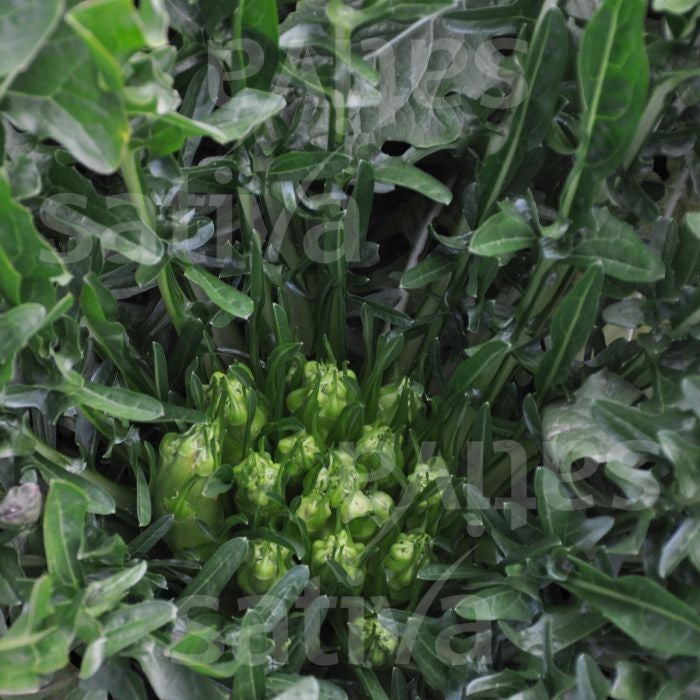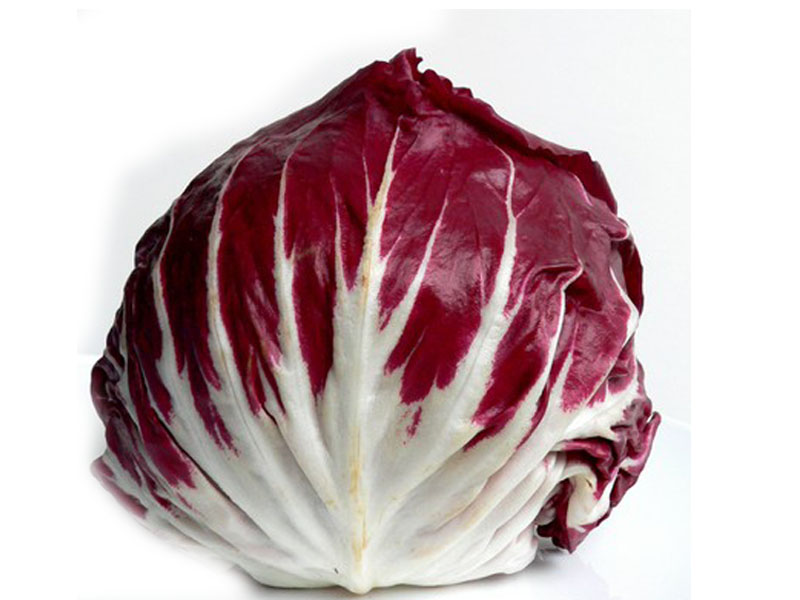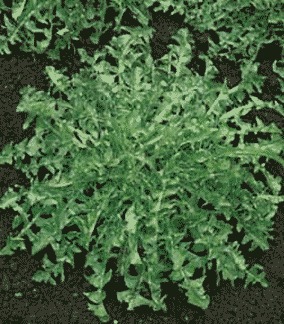CATALONIA PUNTARELLA- zs92
Have a question?

CATALONIA PUNTARELLA- zs92
Dettagli
Species: Cichorium intybus
Family: Composite
Brief history and botanical notes on the plant
The cultivation of red radicchio, according to tradition, began in the second half of the 16th century in the Dosson area in the province of Treviso. Until the 1960s, the cultivation method involved open field cultivation, harvesting, pre-forcing and subsequent bleaching in warm environments rich in organic substances (very often these were manure heaps).
Following the spread of artesian wells and a lucky intuition of some producers, we moved on to the water bleaching method.
The current practice is very particular, complex and rigorous. It requires the radicchio to be "whitened" in an environment that does not allow photosynthesis, with the taproot immersed in tubs of running water for a period varying from fifteen to twenty days; This results in crunchy radicchio with a more delicate flavour. Treviso Red Radicchio is characterized by a tap root, less deeply developed than other types of radicchio. The stem of Radicchio di Treviso has a cylindrical shape, dichotomously branched, sometimes slightly angular, bearing large, lanceolate leaves at the base, with a slightly sinuous edge, dark green in color, with reddish veins. A correlation was found, during the forcing phase, between the thickness of the taproot and the development of the shoot, which normally has a length between 22 and 30 cm. The inflorescences of Cichoirum Intybus L. have a flower head, solidly sessile, on whose flattened disc-like axis the flowers ( flosculi ) are inserted in a number of 18-25 per flower head. They have a gamopetalous corolla, made up of 5 blue-purple petals, welded together almost along their entire length, distinguished only in the extreme part into 5 terminal points. The androecium is made up of 5 stamens carrying the elongated and welded anthers, through which the style passes. These flowers have substantially the same structure, only the shape of the corolla varies; they can be hermaphroditic, unisexual or sterile. The fruit is a pyramid-shaped achene.
Family and variety
The scientific name of radicchio is Cichorium intybus, it belongs to the Composite family.
Radicchio is often referred to generically as chicory. This vegetable is available in a very large number of varieties which are distinguished by the color of the leaf (red or green or variegated) and the shape of the plant (leaves closed in a bud or open to form a rosette); varieties suitable for cutting are also available. The best known forms are those with red leaves such as Treviso, Verona, Chioggia and those with variegated leaves such as Castelfranco, and also those with a rosette shape and dark green leaves such as the green grumulo.
Pedoclimatic needs
The most suitable soil is fresh, sufficiently drained and well-structured soil, it can be cultivated at any time of the year, even in the winter months, as it is able to withstand temperatures well above freezing: you only need to pay attention to autumn frosts early, which occur immediately after sowing. The risk, in fact, is that they induce the plant to produce flowers, thus making the production of leaves futile. If you want to apply a crop rotation, radicchio easily succeeds cabbages, strawberries, onions, carrots, celery, potatoes, spinach and beans. Instead, care must be taken not to sow it for two consecutive years in the same flowerbed, as well as after vegetables that belong to the same family: for example artichokes, and of course salads. It does not grow at temperatures below 8-10C°.
Sowing and transplanting times
The transplanting period begins from mid-June and continues until towards the end of August. 3-5 week old seedlings grown in seedbeds are used. At the time of transplanting, the seedlings are placed in rows 30-40 cm apart while a distance of 30 cm is maintained between the plants.
Fertilizations
Radicchio has low needs for nitrogen, medium for phosphorus and high for potassium. These elements are totally present in a fertile and well-structured soil. For fertilization, take into account the previous crop so as not to "tire" the soil too much.
Crop care and irrigation
After the transplanting phase and throughout the summer period it is necessary to irrigate according to the climatic trend, if the soil is dry beyond 10 cm deep it is necessary to intervene. Avoid unnecessary and dangerous water stagnation for the spread of rot; the soil must be moist and not waterlogged.
Adversity
Radicchio is a rustic and undemanding crop, among the major adversities we remember collar rot and powdery mildew.
Rot is caused by fungi that cause the plants to wither shortly before harvest. Well-worked, ventilated soil, good rotations and successions are unfavorable to their propagation.
Powdery mildew is a fungal disease that manifests itself as whitish, powdery patches that subsequently degenerate into yellowing and drying of the affected leaves. The disease is favored by temperatures around 20 C° (while it stops below 10 C°) and high humidity in the air. It disappears in case of rain, intervene with sulfur when symptoms appear.
Production and harvesting
In approximately 1 m2 you can harvest 2-3 kg of radicchio. These quantities double in the cultivation of sugar loaf or Milan radicchio (1 head can weigh up to 2 kg). Harvesting begins approximately two and a half months after transplanting and continues for 15-20 days.
Nutritional values
Radicchio is a real natural pharmacy that should not be missing from our table in October. Potassium, phosphorus, sodium, iron, magnesium, manganese, copper, calcium, bitter principles and sugary substances, large quantities of vitamins, amino acids and very small quantities of proteins and lipids. The properties of radicchio are multiple. The main action is toning, precious during seasonal changes, in which the immune, nervous and joint systems are put to the test. Very low in calories, just 14 per 100 grams, it is a very valid aid in the treatment of loss of appetite. Consumed as an appetizer, before lunch or dinner, thanks to its bitter substances, it stimulates the appetite. Anti-anemic, mineral supplement, liver purifier, diuretic and slightly laxative, it is even febrifuge. Inserted into the daily diet, radicchio is a remedy for the first seasonal flus.
Biodynamics
Sowing, cultivation care and harvesting on leaf days.




